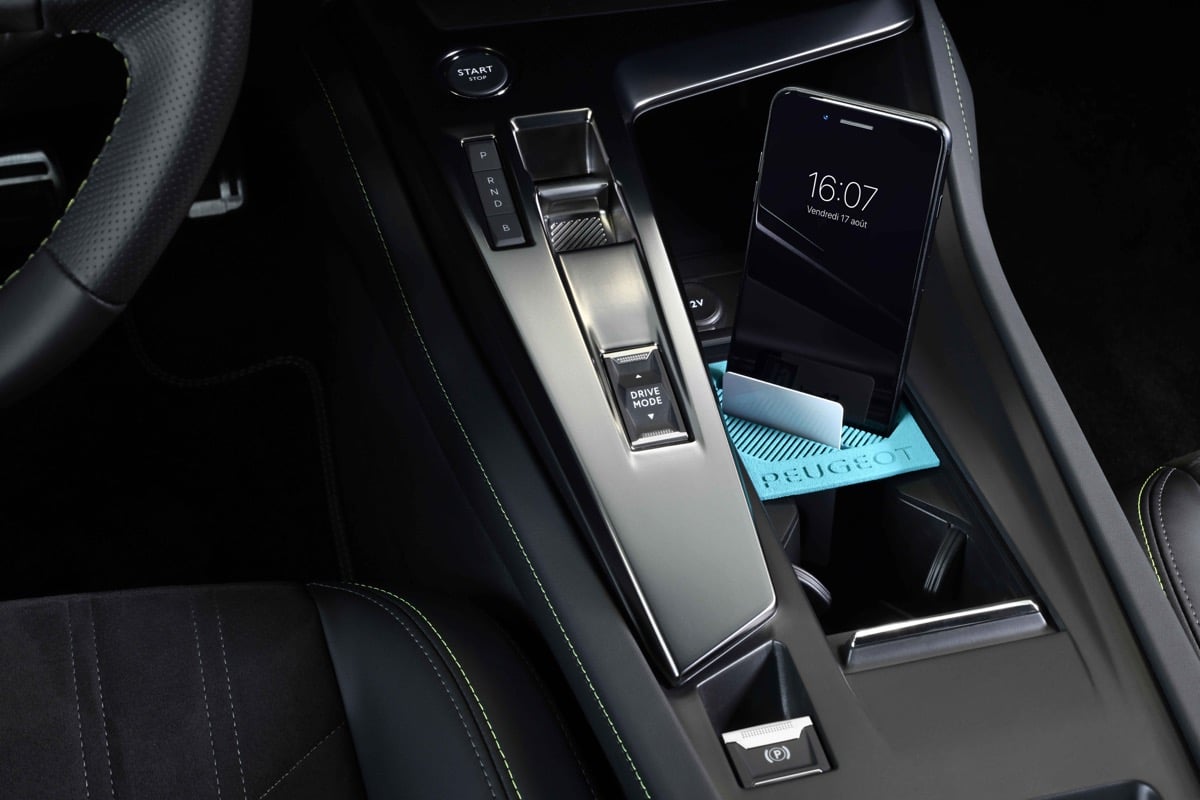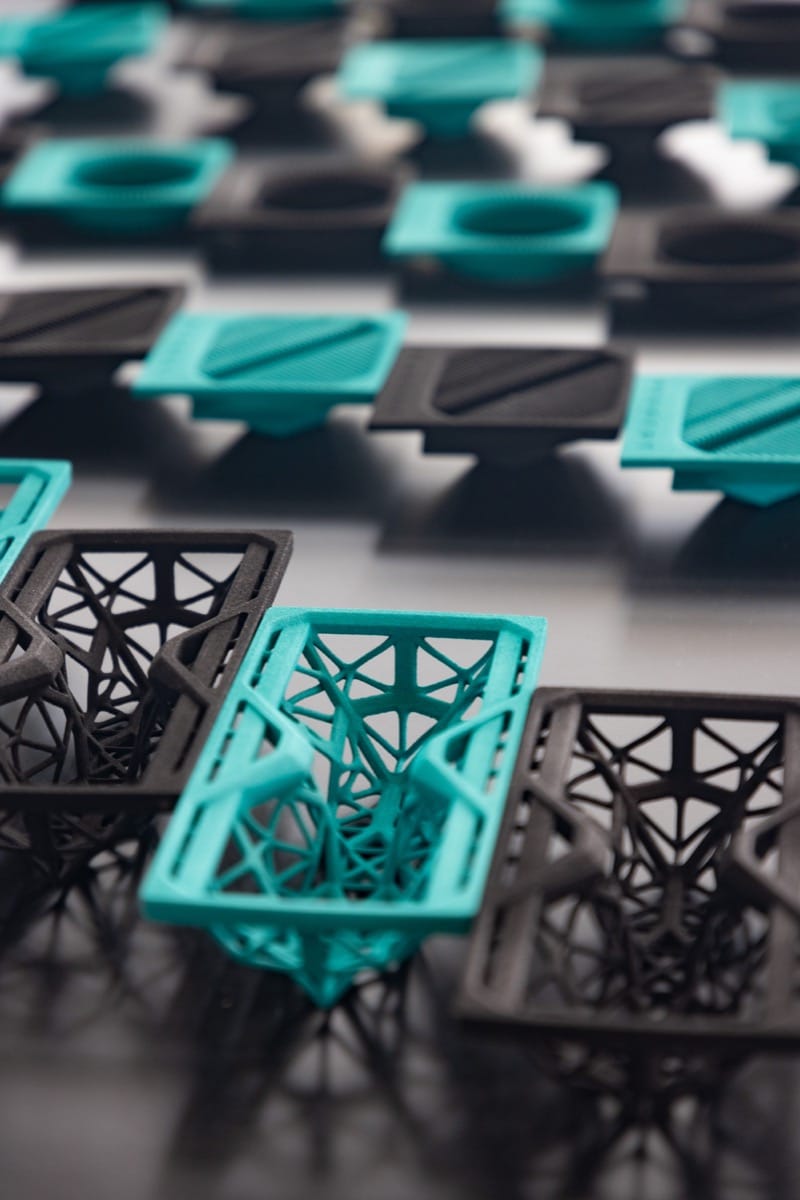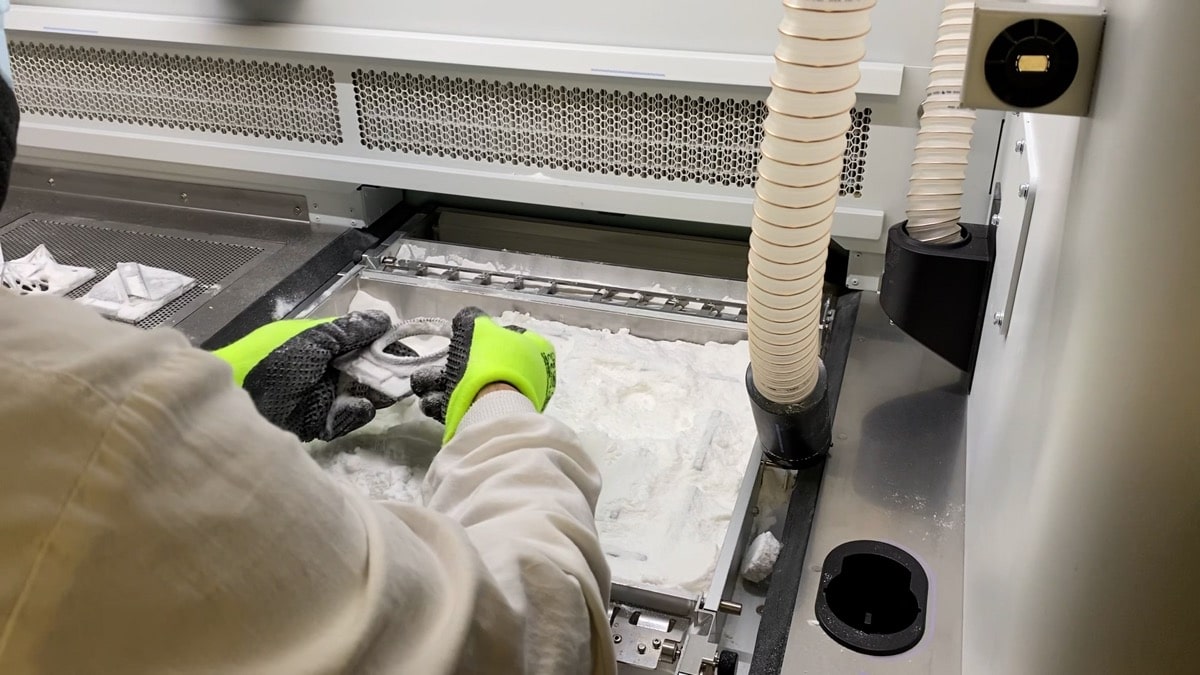The Stellantis group has been eyeing 3D printing for some time, especially through the activities of its French PSA (which includes PEUGEOT and Citroën) component. PSA has made deals with Divergent 3D and introduced experimental printed parts – even metal ones, – for Citroën cars. The Italian-Amerian side of the company, FCA, has been working on prototyping for over two decades, with the famous example of the Alfa Giulia’s front grill. More recently the company has been working with MJF technology for production components on its Jeep branded cars and other long-term conceptual projects. Now it’s all coming together with commercial MJF 3D printed accessories for the PEUGEOT 308.
Available on the PEUGEOT LIFESTYLE shop, the range of accessories included a sunglasses holder, a can holder and a phone/cardholder and has been created specifically for the new PEUGEOT 308. This is the first time that 3D printing technology has been used on commercial car accessories by the company, an innovation that looks very promising for the entire automotive industry.
These accessories are the result of a joint effort by PEUGEOT’s Design, Product and Research & Development teams in collaboration with HP Inc., Mäder and ERPRO. They are 3D printed using the new HP Multi Jet Fusion (MJF) 3D printing technology. The aim is to offer innovative products that are pleasant to the touch, light, solid and easy to use, and which enhance the interior well-being offered by the 308 and its new PEUGEOT i-Cockpit.
The designers’ objective at the start of the project was to make accessories more visible and attractive by innovating and using modern materials. The range of accessories was drawn up after a detailed analysis of how customers use storage in the car. As traditional materials did not meet the specifications, the PEUGEOT Design “Colours and Materials” team worked with its partners to develop a material with a more innovative look. 3D printing was the obvious solution.
Flexible and environmentally-friendly
PEUGEOT highlighted that the company sees 3D printing as one of the fundamental pillars of the fourth industrial revolution. With this new technology, it is possible to increase flexibility, adapting to the needs of an increasingly demanding and unpredictable market. All kinds of customized objects and accessories can be produced without needing expensive molds and manufacturing tools.
Manufacturing on Demand
Another key advantage is that 3D printing is also better for the environment, a very important feature in PEUGEOT and STELLANTIS’ quest for sustainable manufacturing processes that save resources and waste. Its use is becoming more and more widespread and is revolutionizing the manufacturing system across many industries. Indeed, additive manufacturing is becoming an alternative to manufacturing techniques such as injection molding.
The project looked to 3D printing as a way to have fewer manufacturing constraints and more possibilities for part complexity (doing away with injection molding), opening up new creative spaces for its designers. The optimized structures offer reduced weight, greater strength, fewer assemblies, and flexibility by using mesh.
As an agile production method, high-throughput 3D printing such as that offered by HP also offers infinite customization possibilities, mass production with shorter lead times, and no need for storage thanks to “on-demand” production. In addition, this technology is constantly evolving, both in terms of the materials it uses and the production methods. And the production costs just keep going down.
A most innovative material
In just a few months, the teams have jointly developed a new polymer that featured several advantages. It is more flexible, malleable and robust. It can be 3D printed very quickly and is made to measure. In addition, it offers a very high quality of the rendering, with highly accurate details thanks to very fine molecules. The flexible material used is the Ultrasint thermoplastic polyurethane (TPU), the fruit of a partnership between HP Inc. and BASF. This material offers durable, strong and flexible parts. It is a perfect material for impact-absorbing parts that require high elasticity and for flexible mesh-like structures. The material can be used to produce parts with a high surface quality and a very high level of detail.
The use of TPU in a car interior is a new approach, which has now been patented by the STELLANTIS Group. The group admits that 3D printing is still in its infancy in the automotive industry conceding that technology is intended to be developed in series, not only on the range of accessories but also on more technical parts of the next PEUGEOT models. The advantages of AM offer infinite production possibilities that STELLANTIS now intends to implement.
* This article is reprinted from 3D Printing Media Network. If you are involved in infringement, please contact us to delete it.
Author: Davide Sher




Leave A Comment